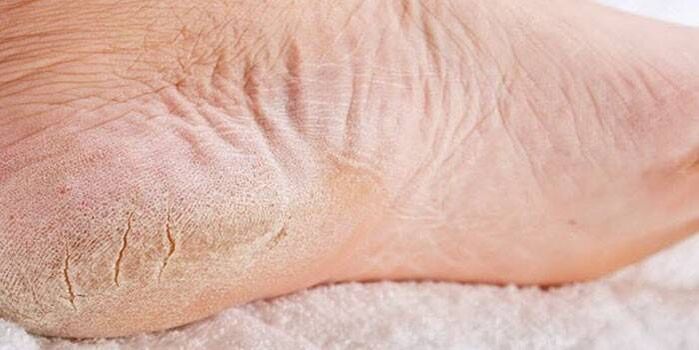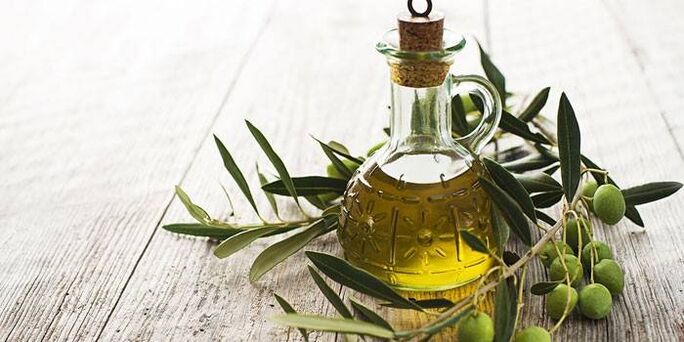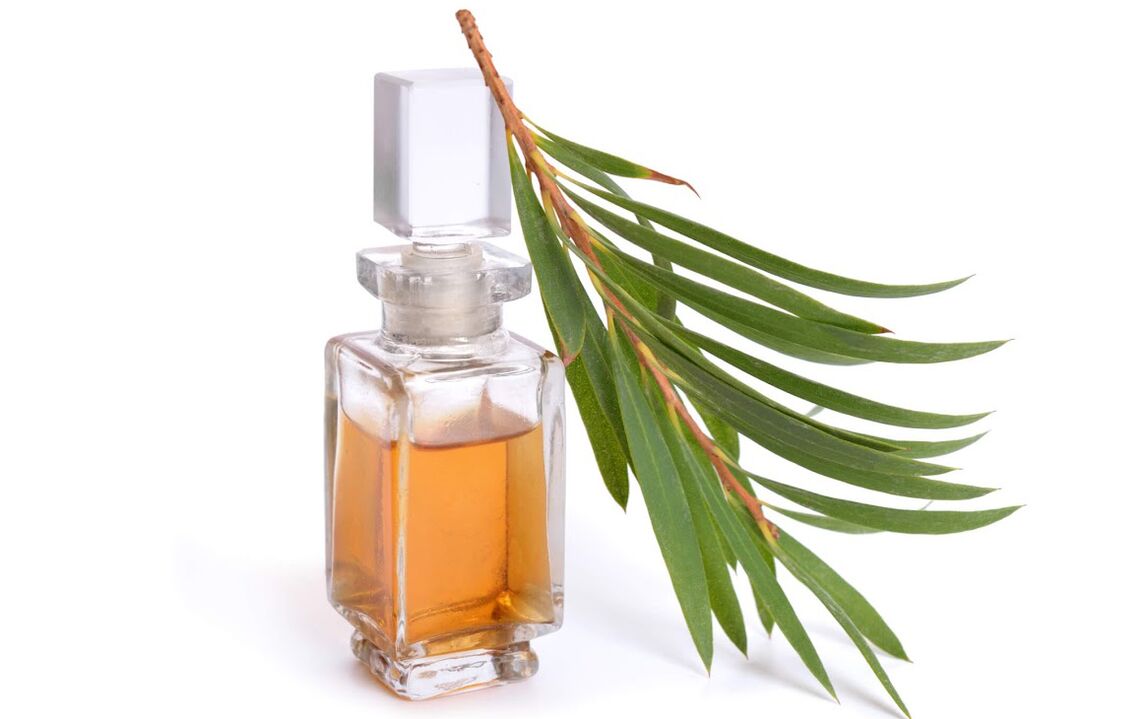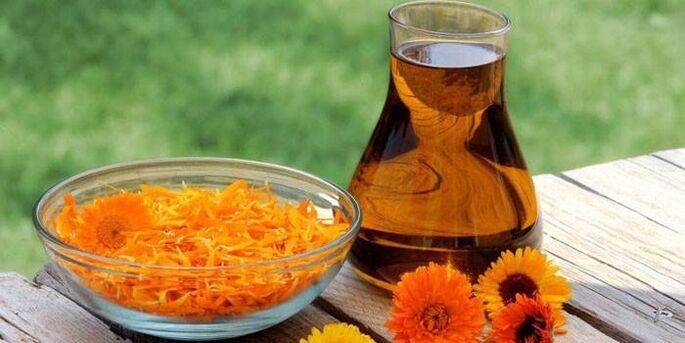One of the most common pathologies of the feet and nails is the fungus. Treating this disease takes a long time because getting rid of a fungal infection is not easy. In addition to drug therapy, folk remedies are used that give excellent results even in advanced cases. In the initial stages of the disease, you can cure the infection on your own, at home.
What are fungal infections and ways of infection
Mycosis or dermatomycosis is an infectious lesion of the skin on the feet, interdigital areas, fingers and nails. Predominantly fungal infections of the foot occur in cultures where closed shoes are most often worn. More often, the disease affects the elderly and immunocompromised people due to any severe pathology (immunodeficiency, pemphigus, diabetes mellitus, circulatory disorders of the limbs, and others).
Pathogens of the fungal infection parasitize the stratum corneum of the skin. They produce enzymes that break down keratin. Their cell walls (membranes) contain mannan substances that suppress local immunity and contribute to the development of chronic inflammatory processes in the skin. The main pathogens of mycosis are Trichophyton rubrum, Trichophyton mentagrophytes and Epidermophyton floccosum.
There are two ways to get infected with the fungus: directly or indirectly. The first version of the infection offers several variants:
- close contact with a sick person;
- contact with an infected animal;
- through the plants with which the sole is in contact;
- through the soil in which the pathogen lives.
Indirect mode of infection of foot mycosis:
- when using household items or personal hygiene items of a sick person;
- when using objects touched by an infected animal.
Symptoms of the disease
Depending on the type of fungus, specific symptoms of the disease are distinguished. For example, dermatophytes do not show up in any way for a long time, penetrating deep into the skin layers or under the nail bed. If the cause of mycosis is trichophytosis, the signs of infection are immediately visible - a yeast-like microorganism causes inflammation on the nails and skin, destroying the tissues in a short time. Without laboratory tests, it is difficult for even an experienced dermatologist to tell what type of infection a patient has.
In the early stages of the disease, the common symptoms of the fungus are:
- cracks in the sole;
- itching, burning, dryness, peeling of the skin;
- unpleasant foot odor;
- discoloration and brittle nails;
- glossy skin surface;
- thickening and redness of the epidermis;
- increased sensitivity of the sole;
- appearance of bubbles filled with fluid at the site of inflammation.

Forms of fungal infection
The external manifestations of the fungus depend not only on the type of pathogen, but also on the extent to which they are involved in the inflammatory process of the skin, nails and feet. Dermatologists distinguish the following forms of foot mycosis:
- Squamous shape (scaly). Redness and peeling are observed in the initial stage. The affected areas have different areas.
- Hyperkeratotic section. Strong roughness of the sole, deep cracks in or near the heel. Both feet are affected at the same time.
- Intertriginal form. Considered the most common. It affects the area between 4-5 toes, less often between 3-4. Cracks are replaced by erosion, which begins to get wet, itching and burning. Streptococci penetrate the loose structure of tissues and cause pustular inflammation.
- Dyshydrotic form. The aqueous blisters that appear on the epidermis fuse. After they are hidden, extensive ulcers develop. Mycosis spreads to the hand.
Treatment of foot fungus with folk remedies
All folk remedies for foot fungus have several functions: to destroy the fungal mycelium, to eliminate the symptoms of inflammation, to restore the integrity of the skin, to increase local immunity, to prevent the relapse of the disease. Infusions and infusions for oral administration and solutions, ointments and compresses for external use are used for this purpose.
Many plants, minerals, chemicals (copper sulfate) and even gunpowder have antifungal effects - scientific research has shown. More than 1, 000 plant species have been identified that have a pronounced fungicidal and fungicidal effect. The composition of such plants contains benzoic and salicylic acid, furocoumarin, novoimanin and other substances that have a therapeutic effect on fungal infections.
Rules and principles of treatment
Before starting treatment of the foot fungus on its own with folk remedies, consult your doctor to prevent further development of the pathology. It is very difficult to cure advanced forms of mycosis, so if it did not occur a few days after you started using one or the other method of positive dynamics, you should see a doctor.
There are many popular recipes based on the use of herbal and natural ingredients. It is recommended that the foot fungus be treated at bedtime to allow time for the medicine to work. Regardless of the method chosen to get rid of mycosis, the basic rule must be followed: therapy should be performed not only until complete resolution of symptoms, but also for some time thereafter. During therapy it is necessary:
- follow a low-sugar diet, that is, remove sweet, starchy foods from your daily menu;
- excludes the use of cosmetic varnish, which creates a favorable environment for the growth of pathogenic bacteria;
- perform regular iodine treatment on the nail plates affected by the fungal infection (onychomycosis);
- disinfect floor coverings and footwear to prevent relapse.
Foot bath for foot mycosis
In the early stages of the disease, therapeutic foot baths are of great help in relieving symptoms. Traditional medicine offers many of the ingredients from which these treatments are made. These are decoctions and infusions of herbs (celandine, wormwood, yarrow, oak bark and others), vinegar, soda and other ingredients. Fight infections daily with trays, immerse your feet in a warm, freshly prepared solution for 15-20 minutes.
The average treatment time for adults is 2 weeks, but the procedure can be extended if needed. Foot baths not only stop the growth of the fungus, but also get rid of unpleasant odors, eliminate excessive sweating of the foot. With proper lower limb hygiene, the positive effect will be noticeable within a few days of starting treatment. Examples of trays that can be easily made at home to get rid of foot fungus:
- Take 3 liters of warm water, mix with 200 g of sea salt. For effectiveness, you can add ground cinnamon (1 tbsp), chamomile or pine needle decoction (250 ml).
- Pour warm water into a pool, add 50 ml of table or apple cider vinegar and some potassium permanganate granules. After the procedure, lubricate the affected skin area with tea tree oil.
Compresses and body lotions
It is advisable to use a compress or lotion in the complex home therapy of foot mycosis. Celandine oil, garlic, onion, alcoholic tinctures, iodized salt and peppermint are used in these processes. Kombucha, pumpkin pulp, fresh burdock leaves are applied to sore spots. The selected materials are crushed, applied to the area between the toes and the foot for 40-50 minutes, and wrapped in a plastic bag (foil). The process of treatment is 1-2 times a day until complete recovery.
Essential oils and natural pastes
Effective treatment of foot fungus at home using natural plant and essential oils. Tea tree extract (soothes the skin, eliminates itching), lemon (strengthens nails, increases local immunity), cinnamon (prevents fungal growth), rosemary (regenerates tissues) are excellent. An effective natural antiseptic lavender oil with analgesic and wound healing effects, it removes the symptoms of mycosis much faster than other folk remedies.
You can apply the essential oil in its pure form (after an allergy test) or make natural pastes by mixing a few drops with any vegetable oil (coconut, cocoa, olive, jojoba). Manipulations should be performed three times a day for several weeks. If the nails are affected by foot mycosis, such treatment lasts until the plate is completely renewed (for several months).

Herbal decoctions and tinctures
The popularity of herbs in the treatment of fungal infections is due to their high efficacy and availability. Herbs are used not only to remove the fungus but also to prevent infection. The main methods of treating mycosis at home are tinctures (infusion of herbs with ethyl alcohol), decoctions (herbs are heat-treated in a steam bath to keep them from boiling) and infusions (herbs are infused with boiling water) and infusions).
The method and duration of therapy depend on the age of the patient, the comorbidities and the severity of the symptoms. Average duration of use: 2-3 times a day for 14-30 days. The most effective antifungal herbs for the treatment of fungal infections:
- birch buds;
- cold mint;
- aloe;
- eucalyptus;
- walnut leaves;
- chamomile medicine;
- Japanese sophora;
- puppeteer;
- dandelion;
- runnik;
- Kalanchoe;
- common juniper.
How to cure foot fungus at home
Traditional methods of fungal growth have been shown to be effective. In order to forget about foot fungus forever, the foot area should be properly cared for during and after treatment. For a quick recovery, you will need:
- dry the skin thoroughly after bathing;
- wear only dry and clean shoes;
- do not overheat the feet, avoid heavy sweating;
- wear warm-toed sandals in warm weather;
- wear socks made of natural materials that have high breathability and hygroscopicity;
- Always wear personal slippers when showering in a public place.
Practical tools and products in the kitchen
It is easy to find folk remedies at home to get rid of the fungus. Every housewife, with the tools available in the kitchen or refrigerator, has some cure for mycosis. The cheapest:
- Coffee. In this case, the aromatic drink is for external use. A regular foot bath of freshly brewed strong coffee will help you cope with the disease.
- Garlic. There are many options for using the plant, but the simplest is garlic juice, which is rubbed into the affected tissues. The procedure is performed 3-5 times a day with a cotton ball until the symptoms disappear.
- Onion. The fresh onion peel should be placed in a plastic bag to be worn on the feet. The edges of the bag should be tied so that the bow does not touch the sole and the foot is in an impromptu steam-air chamber all night. Usually 5 times is enough to get rid of the fungus.
Pharmacy traditional medicine
If you don’t have time to look for a cure for foot fungus at home, you can get an effective natural medicine from the pharmacy. Among them:
- Potassium permanganate. A cure known as potassium permanganate is effective in treating mycosis. To solve the problem, apply a compress soaked in potassium permanganate solution to the foot every night until the problem goes away.
- Iodine. The skin areas affected by the fungus are treated twice daily with a 5% alcohol solution. Contraindications to such treatment are the high sensitivity of the skin and the individual intolerance of the ingredients.
- iodinol. For onychomycosis, a universal blue solution is used to soften the nail plate, which has become very rough. Iodinol is used 2-4 times a day to wipe out tissues affected by a fungal infection.
- Propolis. Alcohol tincture is often used to treat mycoses. You can make a homemade solution by infusing propolis with vodka or alcohol, but this does not affect the effectiveness. To treat and prevent the fungus, apply a cotton ball soaked in tincture to the infected area and allow it to dry completely 1-2 times a day.
- Ammonia. A tablespoon of product should be diluted in a glass of distilled water, then saturate the tissue with the resulting solution, wrap the legs, secure with glue and withstand the compress overnight.
- Boric acid. Antifungal therapy will require powder, which, after steaming, is sprayed on the foot in an appropriate dose and socks are pulled on top. The procedure is performed every night. The boric acid is left overnight.
Herbal medicine for foot mycosis
Some plants have natural antibiotics, while others have a complex effect on the affected area. Toxic herbs that are unacceptable to swallow are often used to treat mycoses. Death of membrane cells of pathogenic fungi is due to the presence of an aggressive plant environment, leading to rapid neutralization of the pathology. Strong herbs include:
- black nightingale;
- cheremitsa;
- male fern;
- blackening lumbago.
Effective folk remedies against foot fungus
In order for the folk cure for mycoses to help, the treatment process needs to be properly organized. Before starting any procedure, steam your feet, cut off ingrown nails, grind loose tissue, and remove rough and dead skin. Only then can folk recipes be successfully applied. The natural ingredients not only completely destroy the fungal infection but also restore the healthy appearance of the nails and skin. The most effective folk remedies need to be discussed in more detail.
Garlic compresses
The old home remedy for foot fungus is the garlic compress. The effectiveness of this simple and affordable method is due to the composition of the plant. In addition to vitamins, carbohydrates and proteins, garlic also contains ascorbic acid, which is harmful to harmful microorganisms. You should know that if you don’t use a garlic compress wisely, it can burn your skin. Therefore, the dosage and duration of therapy should be strictly adhered to during treatment. Garlic compress recipe:
- melt 50 g of butter, add 1 head of minced garlic, 2 tbsp. l. coarse rock salt and mix thoroughly;
- apply the resulting mass on sterile gauze in an even layer and apply on the affected areas for 1 hour;
- treat with a compress several times a day, leaving the limbs motionless during the procedure;
- the recommended course is 1 month.
Vinegar
You can fight fungus with any vinegar essence: wine, apple, rice, malt or cane. The working principle of vinegar is to penetrate its substances into infected tissues and destroy the cell membranes of the fungus. Mycosis does not develop under the influence of an acidic environment, as colonies of the pathogenic microflora are destroyed under its influence. In the initial stage of treatment, a low concentration of vinegar (from 3%) should be used, which increases gradually.
Prior to treatment with this method, the infected area of the skin should be inspected for abrasions and cracks to prevent inflammation or chemical burns in the epithelium. If they are not there, you can start using the vinegar compress:
- Stir smoothly for 2 tbsp. l. nine percent vinegar, 1 tbsp. l. glycerin and 2 tbsp. l. vodka;
- dip the pieces of bandage into the finished mixture and apply to the localization site;
- after the bandage has dried, rewet the bandages in the medicated mixture;
- the time used for compression should not exceed 1 hour / day;
- course duration - 2 weeks.
Baking soda
Treating the foot fungus with baking soda at home gives good results. When fungal infection is first suspected, sodium bicarbonate (sodium bicarbonate) should be used, which reduces the acidity of the epidermis. In addition to the disinfecting effect, baking soda softens the skin and nail plates, making it easier for drugs to penetrate after use. Under the influence of alkali, the affected tissues become more sensitive to any other treatment.
In the case of mycosis, soda can be used dry, diluted with water and combined with other natural or unnatural ingredients. For onychomycosis, soda paste will be more effective. To prepare it you will need:
- 3 tablespoons. l. soda mix with 1 tbsp. l. water until a thick and homogeneous mass is obtained;
- then soda paste should be applied to the affected nail to avoid skin contact;
- then the mass must be acidified with freshly prepared lemon juice, which reacts immediately with the soda;
- the solution should be removed 5-7 minutes after application and wash your feet with soap;
- the procedure is performed daily before going to bed until the condition of the nail improves.
Tea tree oil
In dermatology, tea tree oil has been used for more than a dozen years because it has become an extremely effective treatment for skin diseases. The natural composition of the essential fluid determines its cytotoxic activity, i. e. its ability to fight pathogenic microorganisms. Treatment options vary depending on whether the infection is on the skin or nails.
You can heal your nail plate by dripping 1 drop of tea tree oil on the affected area every day. It takes about 2 months for the nail to fully recover and strengthen. For foot treatment, it is best to use a dilute extract. To do this, take vegetable oil (3 parts), mix with essential oil (1 part), shake and apply on the skin 2-3 times a day for 1, 5 months. It is better if the treatment process is regulated by a doctor. Clove essential oil can be used as an analog.

Hydrogen peroxide
Hydrogen peroxide, which is considered the best antiseptic with a pronounced antibacterial effect, helps fight fungal infections. The drug is widely used both in medicine and for the treatment of mycoses at home. Hydrogen peroxide does not accumulate in the body, so allergic reactions are ruled out. For mycoses, baths are effective in promoting the softening of the affected epithelium for further flow of antifungal gels, ointments, creams or sprays prescribed by a doctor.
Making a hydrogen peroxide foot bath at home is easy:
- pour warm water into a basin and add 3% formulation in a ratio of 100 ml / 2 liters of water;
- lower your foot into a container and hold for 20 minutes;
- boiling water should be added in small portions to prevent the solution from cooling;
- remove the softened tissue after the pumice stone process;
- remove moisture with a sponge and apply the prescribed medication to the surface of the skin;
- take a bath daily until the condition improves.
Washing or tar soap
For more than a dozen years, people have been cured at home from a fungal infection with tar or laundry soap. By following the rules for the treatment of the affected skin, you can quickly get rid of itching and unpleasant foot odor. The soap should be combined with salt or iodine to speed up tissue healing. The following recipe will help improve blood circulation in the tissues:
- steam your feet in warm water before going to bed;
- then foam them thoroughly with soap;
- wipe the soapy feet with a cloth and then with pumice stone;
- then wipe dry, smear with cream;
- treat fungal infections with birch tar;
- soak for 1, 5 hours, then remove with cotton swabs;
- put on clean socks on your feet and don’t take them off for 2 days;
- repeat the procedure once a week until the problem goes away.
Salicylic ointment
The main advantage of treating mycosis with salicylic ointment is the high antifungal activity. The drug kills pathogens, prevents them from multiplying, eliminates the keratinized layers of the epidermis, and rarely causes side effects. Apply salicylic ointment in the form of compression with leg mycosis. On the softened skin or nail plate, a drug with a concentration of 5 or 10% is applied in a thin layer, then the foot is placed in a plastic bag and socks are placed on top. The procedure lasts 1 hour twice a day for 10 days.
Propolis
As already mentioned, mycosis propolis is an effective tincture. The alcohol component also has a positive effect on the pathogenic microorganisms. An bee product can be used to make an ointment that should be rubbed overnight in the affected areas for 10-14 days. The recipe is simple:
- mix 20 g of crushed propolis (without wax) and 100 g of sea buckthorn oil;
- heat the ingredients in a water bath for 30 minutes;
- cool the mixture, strain through the cheese cloth and use as instructed.
Celandine and chamomile
Herbs, especially chamomile and celandine, are believed to be the fastest to get rid of a fungal infection. It is better to use them together. For a quick effect, chamomile soup or tea should be drunk (to increase overall immunity) and baths should be prepared with an infusion of celandine. You need to know that the latter fresh juice burns, so use it in its pure form, very carefully.
The infusion requires a crushed stem of the dried plant. Cook 1 tablespoon in a glass of boiling water. l. celandine, let stand for 1 hour, then dilute with a little hot water. With mycoses, the solution is used for therapeutic baths that are performed for 15 minutes each day. Generally, such treatment will alleviate the initial stage of the disease within 14 days.
Infusion of marigold
The flowers of this plant contain a large group of biological substances that have a strong antimicrobial effect. Infusion of calendula copes particularly quickly with onychomycosis. Nails should be steamed and processed before using the medicine. After mechanical cleaning of the nail plate, a cotton swab should be moistened from the fungal plaque and dead tissue in the infusion and applied to the affected area. The procedure is performed daily for 4-8 weeks. Making the product at home is easy:
- pour a glass of boiling water 1 tbsp. l. dry or fresh marigolds;
- insist that you are not in a water bath for 10 minutes;
- cooled, filtered and stored at a temperature not exceeding 4 ° C.

Attention! The information in this article is for informational purposes only. The materials in this article do not require self-handling. Only a qualified physician can diagnose and recommend treatment based on the individual characteristics of the patient.

























